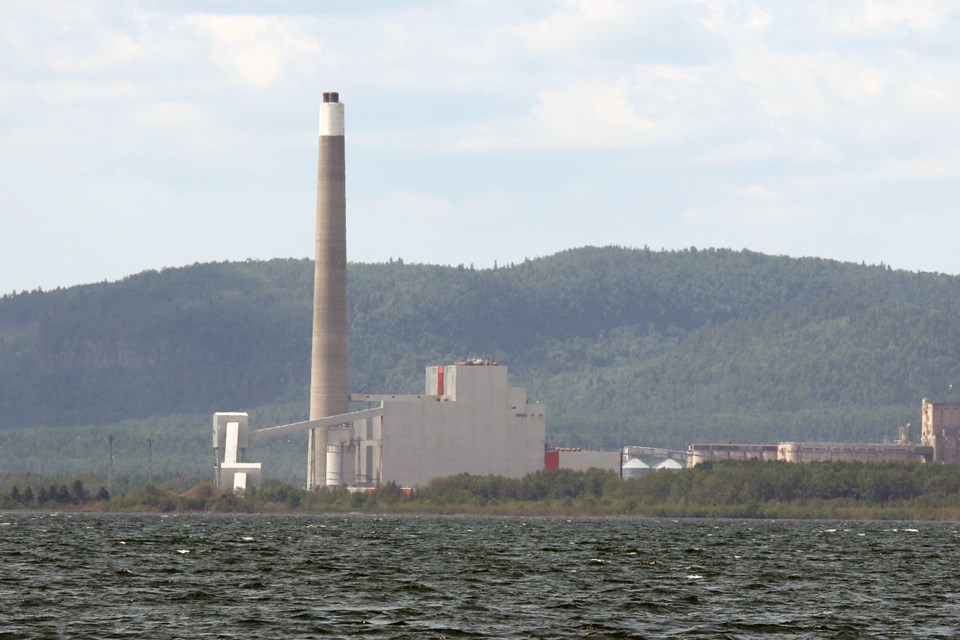THUNDER BAY – A final push is being made by regional leaders to keep the Thunder Bay Generating Station from being permanently powered down.
Last month it was announced by Ontario Power Generation and the Independent Electricity System Operator that the plant is going off the grid after significant corrosion damage was found to the boiler, which has left the facility inoperable since May.
The repairs were estimated to cost $5 million and take six months, leaving only a year remaining on the generating station’s contract, which was to expire in 2020 and was not expected to be renewed.
In late 2015, auditor general Bonnie Lysyk released a report showing the generating station was producing electricity at a cost that was 25 times more expensive than other biomass facilities in Ontario. At the time it was expected to operate for only five days per year. That lack of utilization, and the plant’s role as a capacity preservation option, was cited by OPG as a factor in the decision to shutter the plant.
During meetings at this week’s Association of Municipalities of Ontario conference in Ottawa, delegates with the Northwestern Ontario Municipal Association brought their opposition to the plant’s closure to the attention of new energy minister Greg Rickford.
Iain Angus, a Thunder Bay city councillor and NOMA vice president, acknowledged Rickford did not commit to changing the decision but said the minister will meet with OPG president Jeffrey Lyash next week.
Increased energy demand projected over the coming years will result in a need for more power, not less, Angus said.
“What they don’t appreciate is that we’re going to need all of our hydroelectric generation, we’re going to need the full capacity of the expanded East-West Tie, we’re going to need Thunder Bay and Atikokan generating stations at full capacity and we’re still going to have to build additional generation throughout the region to meet those demands,” Angus said.
“Every four or five years we have a major drought in the Northwest and that drops the available power by two-thirds. We have to plan for that inevitable situation.”
Angus said there are 23 mines working towards production in Northwestern Ontario, with 12 of those having the possibility of operating by 2020.
While awaiting the increased energy demand, Angus wants to see the province commit to either repairing the plant, idle the station but keep the heat on to protect the facility or try to find a buyer to retain the plant.
The billions of dollars in economic activity that would be generated by those mines, as well as the up to $1 billion in potential new revenue for the provincial government, could afford system upgrades throughout the region, Angus said.
That money could pay for the East-West Tie expansion, upgraded transmission lines to Ear Falls, Red Lake and Sioux Lookout as well as a new line to Greenstone, and expanding wood pellet supply to the Thunder Bay and Atikokan generating stations that would create as many as seven new wood pellet manufacturing facilities, he insisted.
The former coal plant, which had been built in 1963, was idled in 2014 when the former Liberal government eliminated coal-fired facilities in Ontario. It was later restarted after being converted to biomass at a cost of about $5 million.
OPG officials had said the closure of the generating station was expected to save provincial ratepayers $40 million.
There were 70 people employed at the generating station. While 20 of those positions are expected to be retained in the region, the remainder would have opportunities to remain with the power authority but would likely have to relocate.
“These are Northern Ontario jobs moving to Southern Ontario, not just the workers but their families and they hold jobs,” Angus said. “We’re going to lose 100 people, plus all of their kids, to Southern Ontario because of this decision.”
The closure would result in a multi-year decommissioning phase for the plant, which would prepare it for its eventual demolition.
